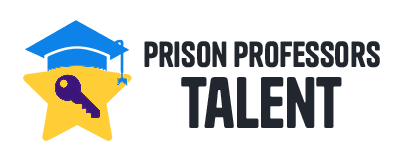Many view vulnerability as a weakness—a crack in our armor that others might exploit. While I worked through books on overcoming crises and working toward success, I learned that many leaders didn’t look at vulnerability as being a liability or weakness. They considered it a strength. Embracing vulnerability could lead to personal growth and deeper, more authentic connections.
To be vulnerable is to openly share our fears, failures, and uncertainties. It means revealing our true selves, even when we’re unsure how others might react. By doing so, we provide context for the challenges we face and the ways we’re navigating through them. Vulnerability leads to honesty, laying the groundwork for self-awareness and trust.
When we are transparent about where we are in life and the steps we’re taking to grow, we inspire belief in our journey. The more we invest in understanding the experiences and influences that brought us to where we are at a given time in our life, the more credible we become when we share our plans and strategies for the future.
To reinforce this path, creating accountability measures—like tracking progress—helps keep us aligned with our goals. Vulnerability, paired with reflection and action, becomes a powerful tool for building trust and driving the success we aspire to achieve.
Much like in the outside world, many people in prison face intense pressure to project an image of strength or perfection. However, embracing vulnerability allows us to shed the facade and accept ourselves as we truly are, at whatever stage of life we find ourselves. This openness can serve as a powerful step in a larger strategy, helping to lay the groundwork for lasting success after release.
Release Plan
I’ll never forget the moment vulnerability reshaped my life. I had spent nearly a year confined to a solitary cell, grappling with the weight of my choices. Throughout my trial, I clung to denial, perpetuating a lie while refusing to confront the truth. Deep down, I knew I was guilty, yet I chose to ignore it, placing blind faith in my attorney’s assurances of a possible acquittal.
After the jury delivered its verdict, I was struck by the gravity of my mistakes in handling the criminal charge against me. Determined to find a better path forward, I turned to reading in search of guidance and understanding. It was during this journey that I encountered the story of Socrates in his jail cell and a conversation he had with his friend Crito. That moment became a turning point in my life.
I realized that meaningful change required abandoning any pretense and confronting the truth of the bad decisions I’d made. While I couldn’t rewrite the past, I could take responsibility and move forward with purpose. By reading more about Socrates, I learned to introspect, and I began to examine every decision that had led me to that point. It was the beginning of a journey toward growth and accountability.
I wasn’t in solitary confinement because a jury found me guilty of selling cocaine. My troubles had started long before I even knew anything about cocaine. During my adolescence, I made poor choices that set me on the wrong path. Instead of dedicating myself to personal growth, education, and building a foundation for future success, I constantly sought shortcuts, choosing the easiest route at every turn.
- Why did I make such choices?
- Who prompted those decisions?
- What could I have done better?
Those questions prompted a shift in my mindset. They helped me come to terms with the fact that I couldn’t change the past, but I could take steps to create a brighter future. Even before my sentencing, I realized the importance of building a release plan—one that would begin immediately. This plan required a clear, unwavering commitment to leaving my old life behind. I needed to draw a definitive line in the sand, dedicating myself fully to using my time inside to prepare for a successful future.
Many books and lessons I’ve created detail the three-part plan I outlined in my initial release strategy. However, that plan is no longer the focus. After serving 9,500 days as a federal prisoner, I’m now in my 12th year of liberty since completing my obligations to the Bureau of Prisons. Still, my journey remains guided by intentional decisions and an unwavering commitment to the success I aspire to achieve.
Every accomplishment I’ve achieved traces back to the lessons I learned during my time in prison—lessons deeply rooted in vulnerability. Embracing vulnerability became the foundation for my growth, enabling me to forge a path toward greater success. When we allow ourselves to lean into this process, we unlock the potential to rise, step by step, to new heights.
As race car drivers often say, sometimes we need to slow down in order to truly accelerate. Slowing down gives us the chance to reflect, to embrace vulnerability, and to grow. I encourage readers to pause and consider the questions I asked above, and the following questions:
- What past experiences have shaped the person I am today?
- How have my past decisions led me to this moment?
- Which decisions am I most proud of, and why?
- What lessons have I learned from the challenges I’ve faced?
- Who or what has had the greatest influence on my current path?
- Are my current priorities aligned with my values and long-term goals?
- What steps am I taking today to create the future I envision?
- How do I define success, and has that definition evolved over time?
- What fears or doubts are holding me back from pursuing my dreams?
- How can I begin taking small, meaningful actions toward my aspirations?

